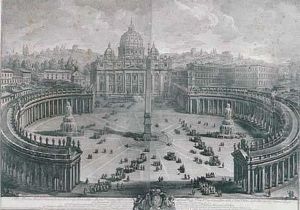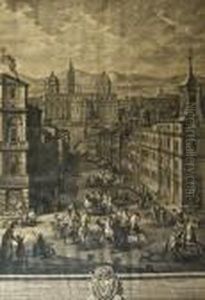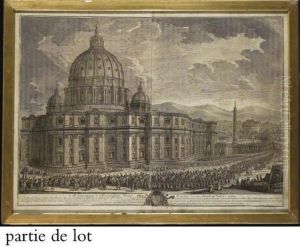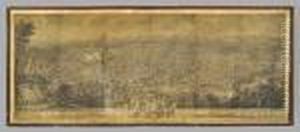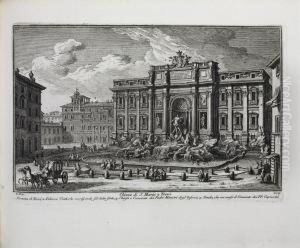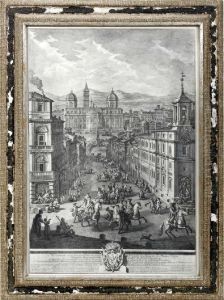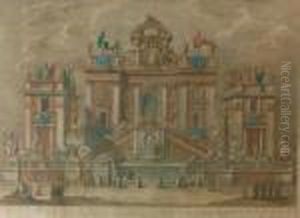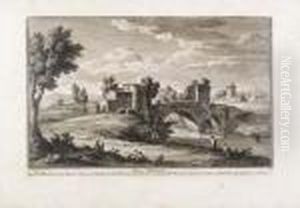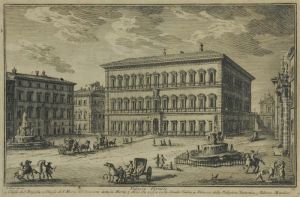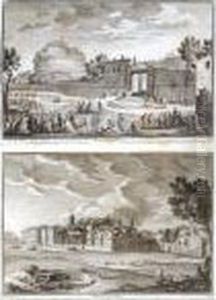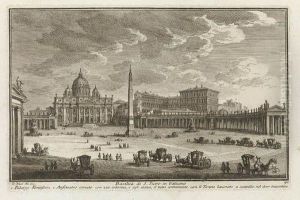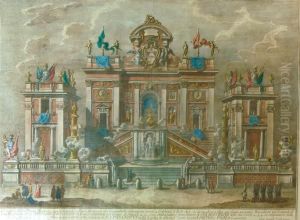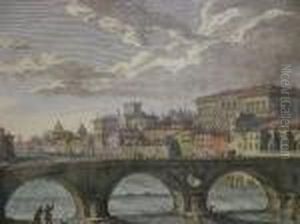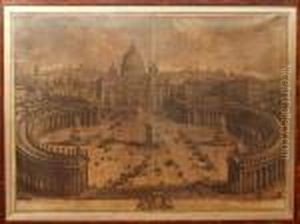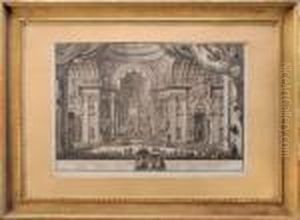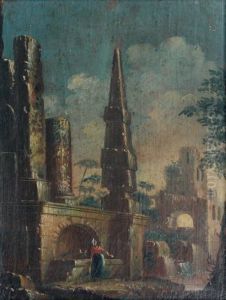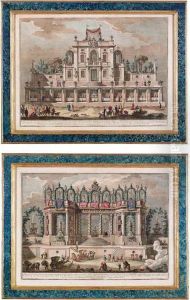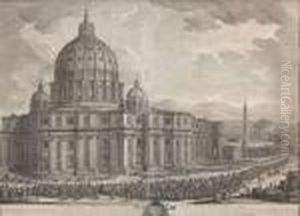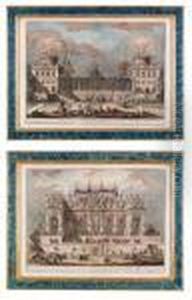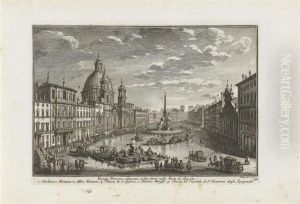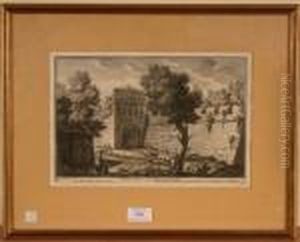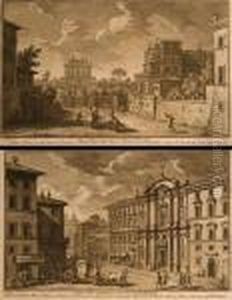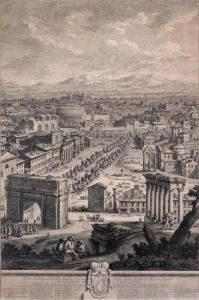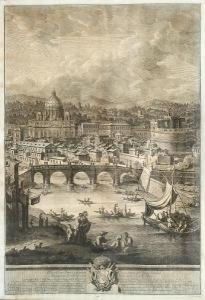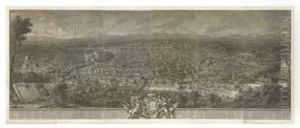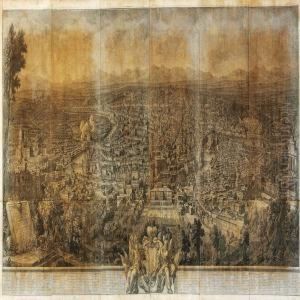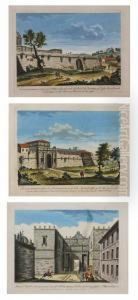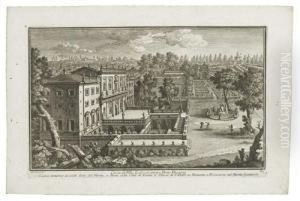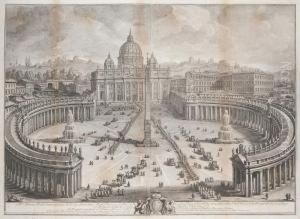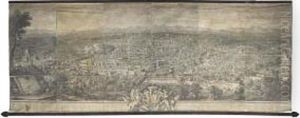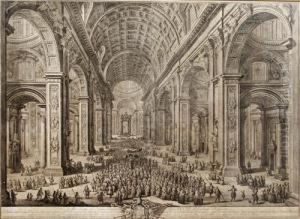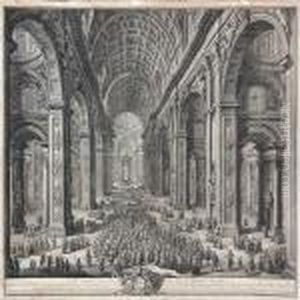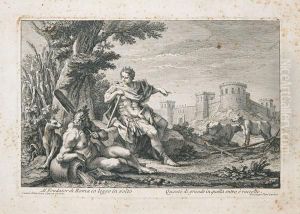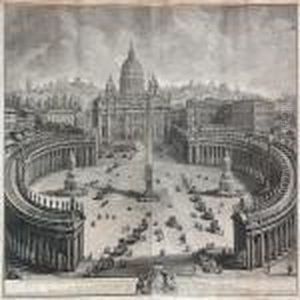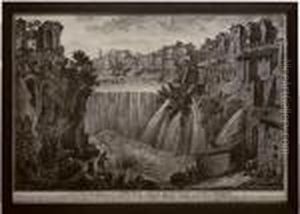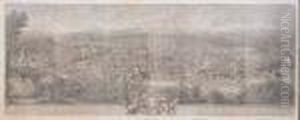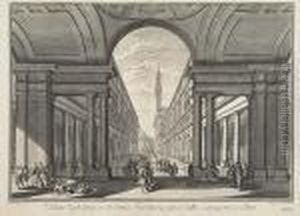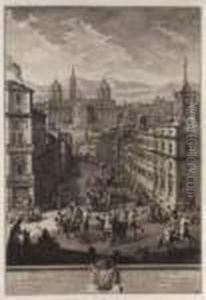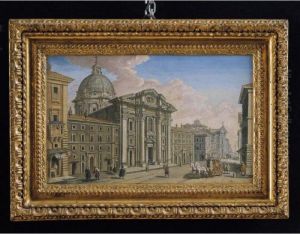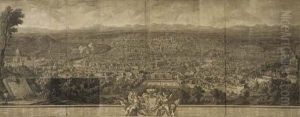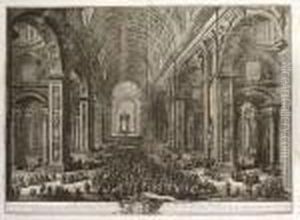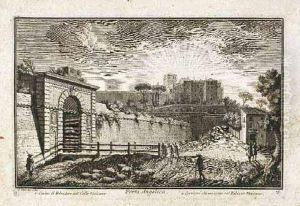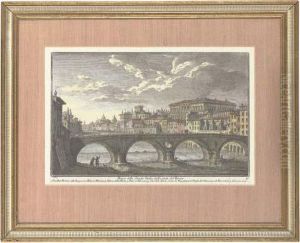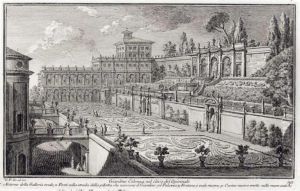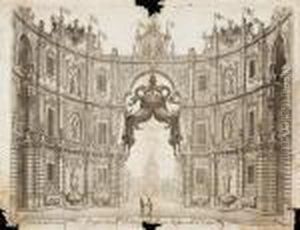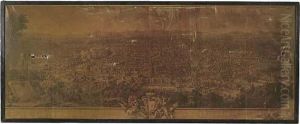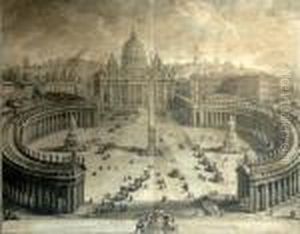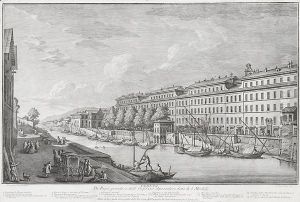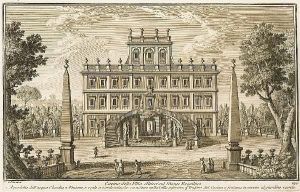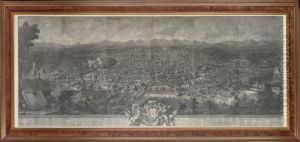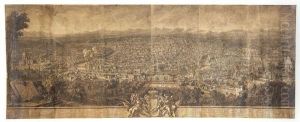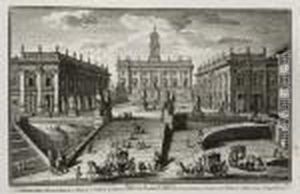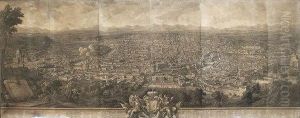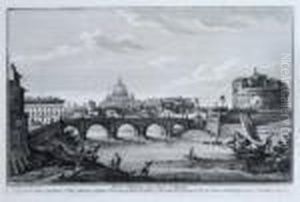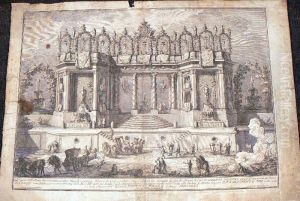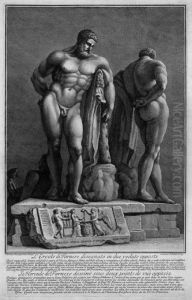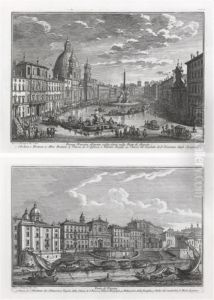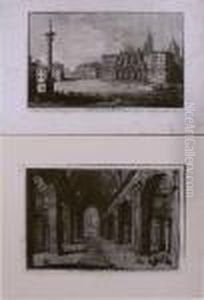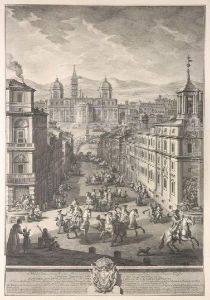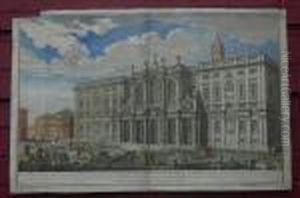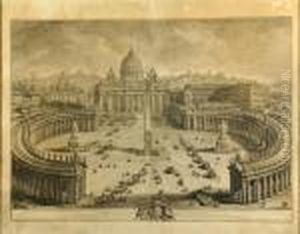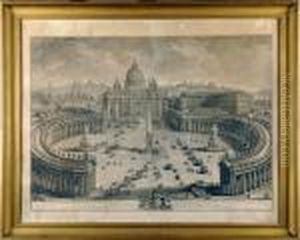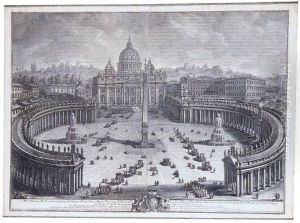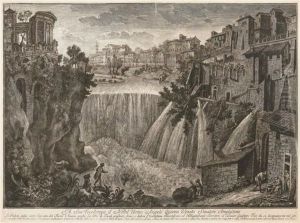Giuseppe Vasi Paintings
Giuseppe Vasi was an Italian engraver and architect, best known for his vedute, or detailed prints depicting the topography and architecture of Rome. Born on August 27, 1710, in Corleone, Sicily, Vasi showed an early talent for drawing and was initially trained by his father who was a stonemason. He later moved to Rome in 1736 to study at the workshop of Giuseppe Barriere, a French engraver. There, he honed his skills in engraving and printmaking and was influenced by the works of prominent artists such as Giovanni Battista Piranesi, who would become both a competitor and a colleague.
In the 1740s, Vasi started his most significant work, 'Delle Magnificenze di Roma Antica e Moderna', a monumental series of etchings that took nearly two decades to complete. This collection of prints was a comprehensive survey of the urban landscape of Rome and included 240 plates illustrating the city's churches, palaces, squares, and ancient monuments. Through his detailed etchings, Vasi played a crucial role in documenting the architectural and urban development of Rome in the 18th century, an era when the Grand Tour was becoming increasingly popular among European aristocrats and scholars.
Vasi was not only an engraver but also an architect and teacher. He taught at the Accademia di San Luca, an association of artists in Rome, and his influence extended to his students, one of whom was the famous artist Giovanni Battista Piranesi, although the nature of their relationship as colleagues or teacher-student is debated by scholars. Vasi's contribution to the visual arts went beyond his prints; he also published guides to Rome for travelers and scholars, which were widely used at the time.
As an architect, Giuseppe Vasi undertook several small projects, but none of them left a significant mark compared to his work as an engraver. His vedute remained highly regarded for their accuracy and served as valuable historical records. Vasi continued working until his death on April 16, 1782, in Rome. Today, his prints are valuable resources for art historians and those interested in the urban history of Rome.
